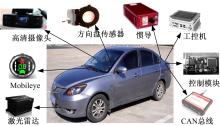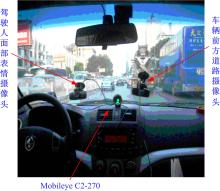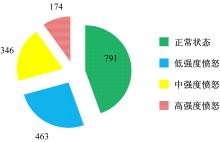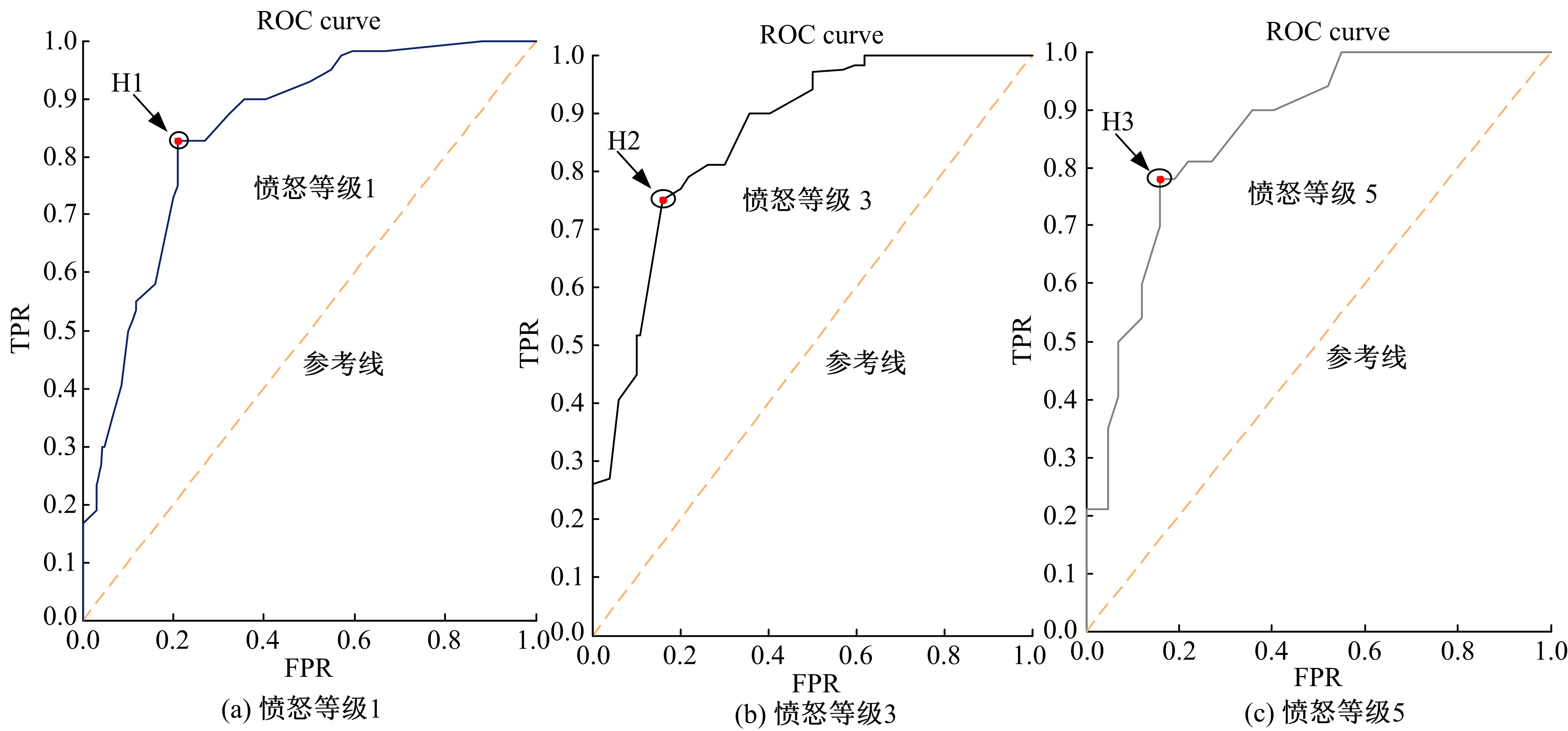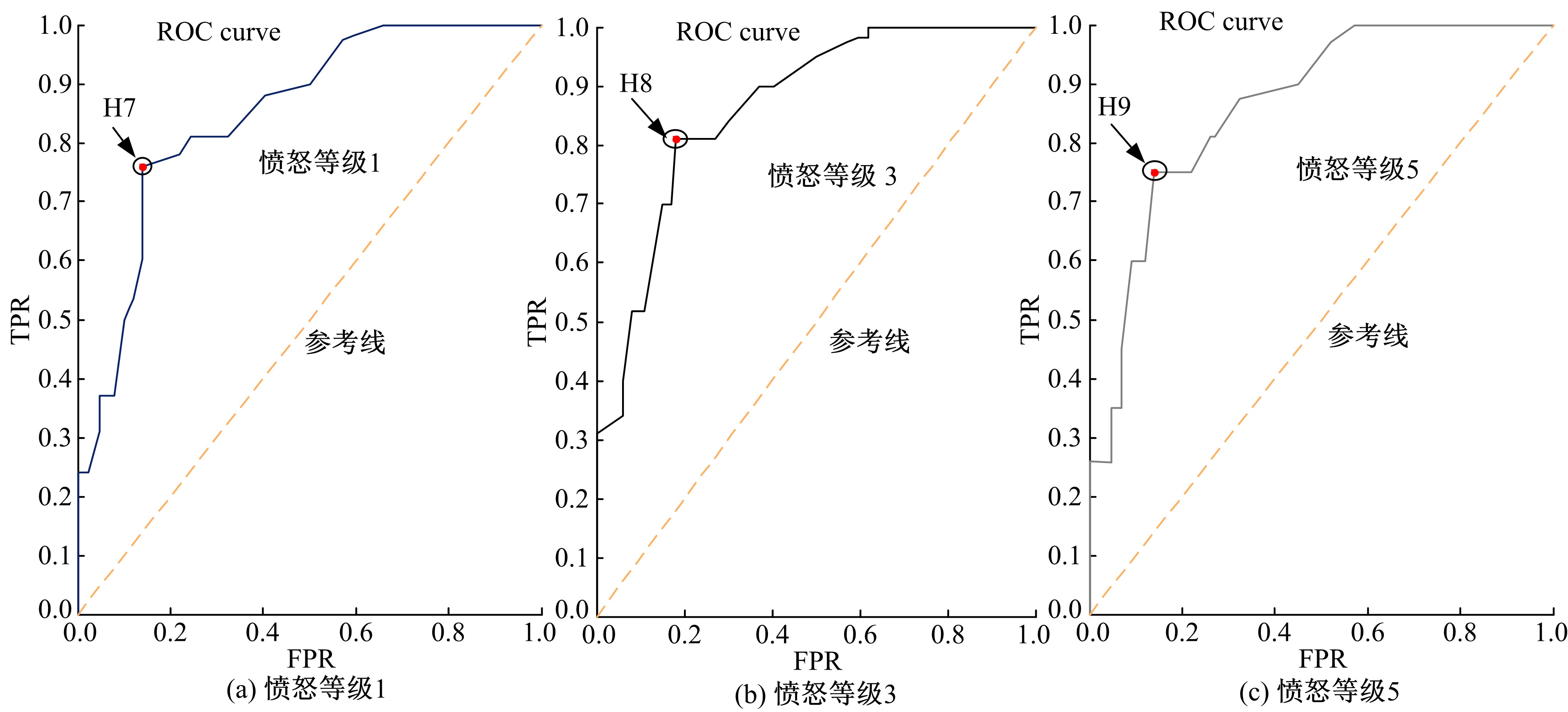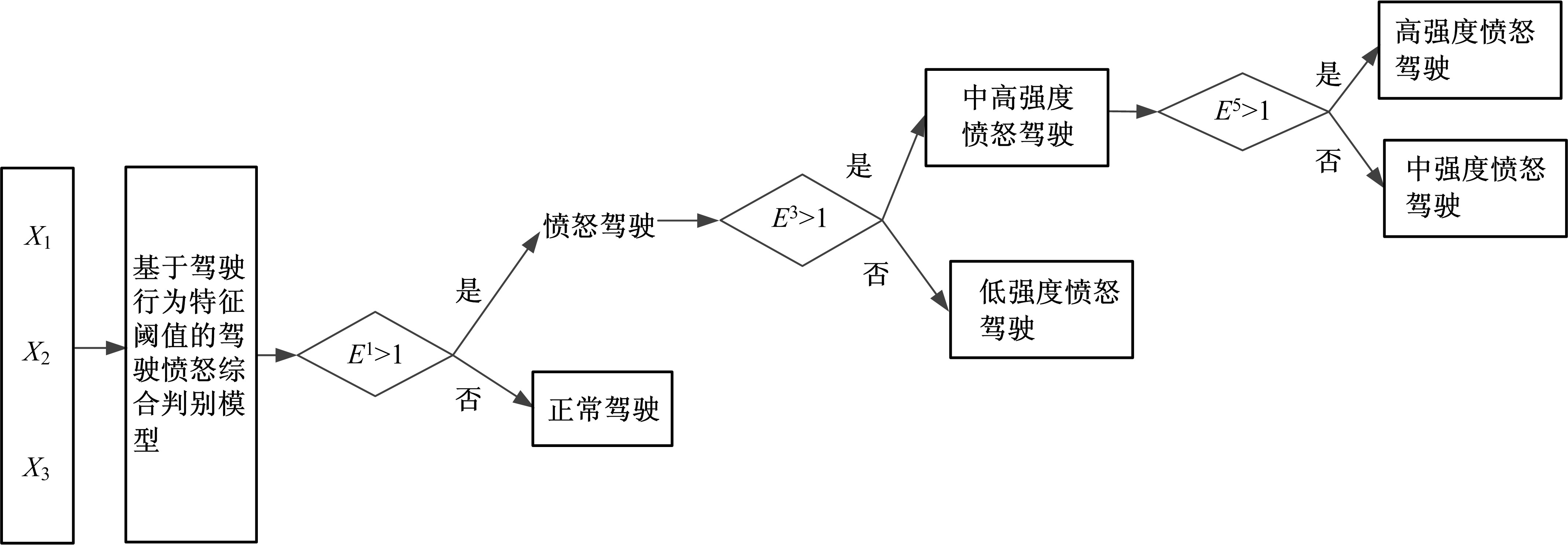吉林大学学报(工学版) ›› 2020, Vol. 50 ›› Issue (1): 121-131.doi: 10.13229/j.cnki.jdxbgxb20180918
• 交通运输工程·土木工程 • 上一篇
基于ROC曲线和驾驶行为特征的驾驶愤怒强度判别阈值
- 1. 华东交通大学 交通运输与物流学院,南昌 330013
2. 武汉理工大学 智能交通系统研究中心,武汉430063
Discriminating threshold of driving anger intensity based on driving behavior features by ROC curve analysis
Ping WAN1,2( ),Chao-zhong WU2,Xiao-feng MA2(
),Chao-zhong WU2,Xiao-feng MA2( )
)
- 1. School of Transportation and Logistics, East China Jiaotong University, Nanchang 330013, China
2. Intelligent Transport Systems Research Center, Wuhan University of Technology, Wuhan 430063, China
摘要:
为了对“路怒症”进行分级预警,提出了一种基于驾驶行为特征的愤怒强度判别阈值求解方法。通过在交通繁忙路段开展限时实车试验获得不同愤怒强度下的驾驶行为数据。基于方差分析选用方向盘转动角速度(SWRAR)、加速踏板踩踏速度(SGP)、横向加速度(LA)作为驾驶愤怒判别指标。运用接受者操作特征(ROC)曲线分析方法求得4种愤怒强度的最佳阈值范围分别为:正常状态0≤SWRAR<1.886 3,0≤SGP<0.397 4, 0≤LA<0.136 2;低强度愤怒1.886 3≤SWRAR<2.324 1,0.397 4≤SGP<0.505 4,0.136 2≤LA<0.155 9;中强度愤怒2.324 1≤SWRAR<3.083 5,0.505 4≤SGP<0.614 2,0.155 9≤LA<0.175 4;高强度愤怒SWRAR≥3.083 5,SGP≥0.614 2,LA≥0.175 4。验证结果表明,此驾驶行为特征阈值的准确率可达79.42%。本文研究结果可为驾驶愤怒分级预警系统的开发提供理论支撑。
中图分类号:
- U491
| 1 | 吴超仲,雷虎 . 汽车驾驶愤怒情绪研究现状与展望[J]. 中国安全科学学报, 2010, 20(7): 3-8. |
| Wu Chao-zhong , Lei Hu . Review on the study of motorists’ driving anger[J]. China Safety Science Journal, 2010, 20(7):3-8. | |
| 2 | Kotinas I . Traffic safety facts: a compilation of motor vehicle crash data from the fatality analysis reporting system and the general estimates system[R]. The U.S. National Highway Traffic Safety Administration, 2011. |
| 3 | 雷虎 . 愤怒情绪下的汽车驾驶行为特征及其对交通安全的影响研究[D]. 武汉: 武汉理工大学智能交通系统研究中心, 2011. |
| Lei Hu . The characteristics of angry drivingbehaviors and its effects on traffic safety [D]. Wuhan: Intelligent Transport Systems Research Center, Wuhan University of Technology, 2011. | |
| 4 | Feng Zhong-xiang , Lei Ye-wei , Liu Hong-chao , et al . Driving anger in China: a case study on professional drivers[J]. Transportation Research Part F: Traffic Psychology and Behavior, 2016, 42: 255-266. |
| 5 | Dahlen E R , Martin R C , Ragan K , et al . Driving anger, sensation seeking, impulsiveness, and boredom proneness in the prediction of unsafe driving[J]. Accident Analysis and Prevention, 2005, 37(2): 341-348. |
| 6 | 张迪, 万柏坤, 明东 . 基于生理信号的情绪识别研究进展[J]. 生物医学工程学杂志, 2015, 32(1): 229-234. |
| Zhang Di , Wan Bai-kun , Ming Dong . Research progress on emotion recognition based on physiological signals[J]. Journal of Biomedical Engineering, 2015, 32(1): 229-234. | |
| 7 | Paschero M , Vescovo G , Benucci L , et al . Real time classifier for emotion and stress recognition in a vehicle driver[C]∥IEEE International Symposium on Industrial Electronics,Hangzhou,China, 2012: 1690-1695. |
| 8 | Kamaruddin N , Wahab A . Driver behavior analysis through speech emotion understanding[C]∥IEEE Intelligent Vehicles Symposium University of California, San Diego, USA, 2010: 238-243. |
| 9 | Katsis C D , Goletsis Y , Rigas G , et al . A wearable system for the affective monitoring of car racing drivers during simulated conditions[J]. Transportation Research Part C: Emerging Technologies, 2011, 19(3): 541-551. |
| 10 | Rebolledo-Mendez G , Reyes A , Paszkowicz S , et al . Developing a body sensor network to detect emotions during driving[J]. IEEE Transactions on Intelligent Transportation Systems, 2014, 15(4): 1850-1854. |
| 11 | Kessous L , Castellano G , Caridakis G . Multimodal emotion recognition in speech-based interaction using facial expression, body gesture and acoustic analysis[J]. Journal on Multimodal User Interfaces, 2010, 3(1): 33-48. |
| 12 | Cai H , Lin Y , Mourant R . Study on driver emotion in driver-vehicle-environment systems using multiple networked driving simulators[C]∥Driving Simulation Conference, Iowa City, Iowa, America, 2007: 1-8. |
| 13 | 万平,吴超仲,林英姿,等 . 基于置信规则库的驾驶人愤怒情绪识别模型[J]. 交通运输系统工程与信息, 2015, 15(5): 96-102. |
| Wan Ping , Wu Chao-zhong , Lin Ying-zi , et al . A recognition model of driving anger based on belief rule base[J]. Journal of Transportation Systems Engineering and Information Technology, 2015, 15(5): 96-102. | |
| 14 | 刘鹏 . 融合面部表情和语音的驾驶员路怒症识别方法研究[D]. 镇江:江苏大学计算机科学与通信工程学院,2017. |
| Liu Peng . Driver road rage recognition by combining facial expression and speech[D]. Zhenjiang: School of Computer Science and Telecommunication Engineering, Jiangsu University, 2017. | |
| 15 | Herrero-Fernánde D . Psychometric adaptation of the driving anger expression inventory in a Spanish sample: differences by age and gender[J]. Transportation Research Part F: Psychology and Behavior, 2011, 14(4): 324-329. |
| 16 | 万平,吴超仲,林英姿,等 . 基于驾驶行为多元时间序列特征的愤怒驾驶状态检测[J]. 吉林大学学报: 工学版, 2017, 47(5): 1426-1435. |
| Wan Ping , Wu Chao-zhong , Lin Ying-zi , et al . Driving anger detection based on multivariate time series features of driving behaviors[J]. Journal of Jilin University(Engineering and Technology Edition), 2017, 47(5): 1426-1435. | |
| 17 | Chen Zhi-jun , Wu Chao-zhong , Zhong Ming , et al . Identification of common features of vehicle motion under drowsy/distracted driving a case study in Wuhan China[J]. Accident Analysis and Prevention, 2015, 81: 251-259. |
| 18 | 陈卫中,倪宗瓒,潘晓平,等 .用ROC曲线确定最佳临界点和可疑值范围[J]. 现代预防医学, 2005, 32(7) : 729-731. |
| Chen Wei-zhong , Ni Zong-zan , Pan Xiao-ping , et al . Receiver operating characteristic curves to determine the optimal operating point and doubtable value interval[J]. Modern Preventive Medicine, 2005, 32(7): 729-731. | |
| 19 | Bechtel T , Capineri L , Windsor C , et al . Comparison of ROC curves for landmine detection by holographic radar with roc data from other methods[C]∥IEEE 8th International Workshop on Advanced Ground Penetrating Radar,Florence,Italy,2015:1-4. |
| [1] | 王芳,李晓光,郭慧,胡佳. 基于驾驶员视觉兴趣区的沙漠草原公路曲线间直线段线形指标优化[J]. 吉林大学学报(工学版), 2020, 50(1): 114-120. |
| [2] | 狄胜同,贾超,乔卫国,李康,童凯. 橡胶集料混凝土细观损伤特性的加载速率效应[J]. 吉林大学学报(工学版), 2019, 49(6): 1900-1910. |
| [3] | 张云龙,周刘光,王静,吴春利,吕翔. 冻融对粉砂土力学特性及路堤边坡稳定性的影响[J]. 吉林大学学报(工学版), 2019, 49(5): 1531-1538. |
| [4] | 彭勇,高华,万蕾,刘贵应. 沥青混合料劈裂强度影响因素数值模拟[J]. 吉林大学学报(工学版), 2019, 49(5): 1521-1530. |
| [5] | 江亮,贺宜. 电动两轮车风险驾驶行为及事故影响因素分析[J]. 吉林大学学报(工学版), 2019, 49(4): 1107-1113. |
| [6] | 李晓珍,柳俊哲,戴燕华,贺智敏,巴明芳,李玉顺. 碳化作用下水泥浆内亚硝酸根离子的含量分布[J]. 吉林大学学报(工学版), 2019, 49(4): 1162-1168. |
| [7] | 于天来,李海生,黄巍,王思佳. 预应力钢丝绳加固钢筋混凝土梁桥抗剪性能[J]. 吉林大学学报(工学版), 2019, 49(4): 1134-1143. |
| [8] | 黄晓明,曹青青,刘修宇,陈嘉颖,周兴林. 基于路表分形摩擦理论的整车雨天制动性能模拟[J]. 吉林大学学报(工学版), 2019, 49(3): 757-765. |
| [9] | 王静,吕翔,曲肖龙,钟春玲,张云龙. 路基土抗剪强度与化学及矿物成分的关系[J]. 吉林大学学报(工学版), 2019, 49(3): 766-772. |
| [10] | 李伊,刘黎萍,孙立军. 沥青面层不同深度车辙等效温度预估模型[J]. 吉林大学学报(工学版), 2018, 48(6): 1703-1711. |
| [11] | 念腾飞, 李萍, 林梅. 冻融循环下沥青特征官能团含量与流变参数灰熵分析及微观形貌[J]. 吉林大学学报(工学版), 2018, 48(4): 1045-1054. |
| [12] | 臧国帅, 孙立军. 基于惰性弯沉点的刚性下卧层深度设置方法[J]. 吉林大学学报(工学版), 2018, 48(4): 1037-1044. |
| [13] | 宫亚峰, 申杨凡, 谭国金, 韩春鹏, 何钰龙. 不同孔隙率下纤维土无侧限抗压强度[J]. 吉林大学学报(工学版), 2018, 48(3): 712-719. |
| [14] | 程永春, 毕海鹏, 马桂荣, 宫亚峰, 田振宏, 吕泽华, 徐志枢. 纳米TiO2/CaCO3-玄武岩纤维复合改性沥青的路用性能[J]. 吉林大学学报(工学版), 2018, 48(2): 460-465. |
| [15] | 马晔, 尼颖升, 徐栋, 刁波. 基于空间网格模型分析的体外预应力加固[J]. 吉林大学学报(工学版), 2018, 48(1): 137-147. |
|
||




